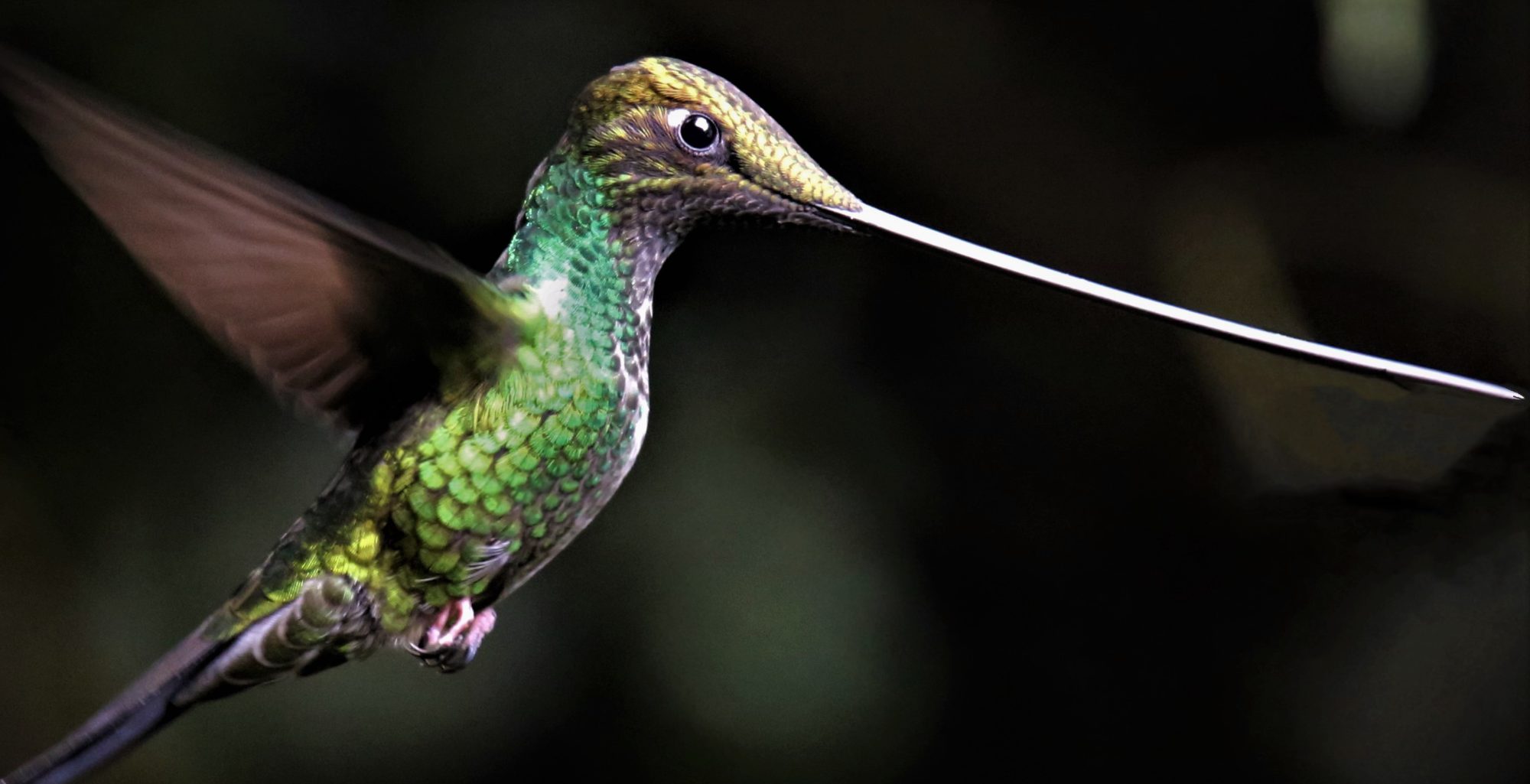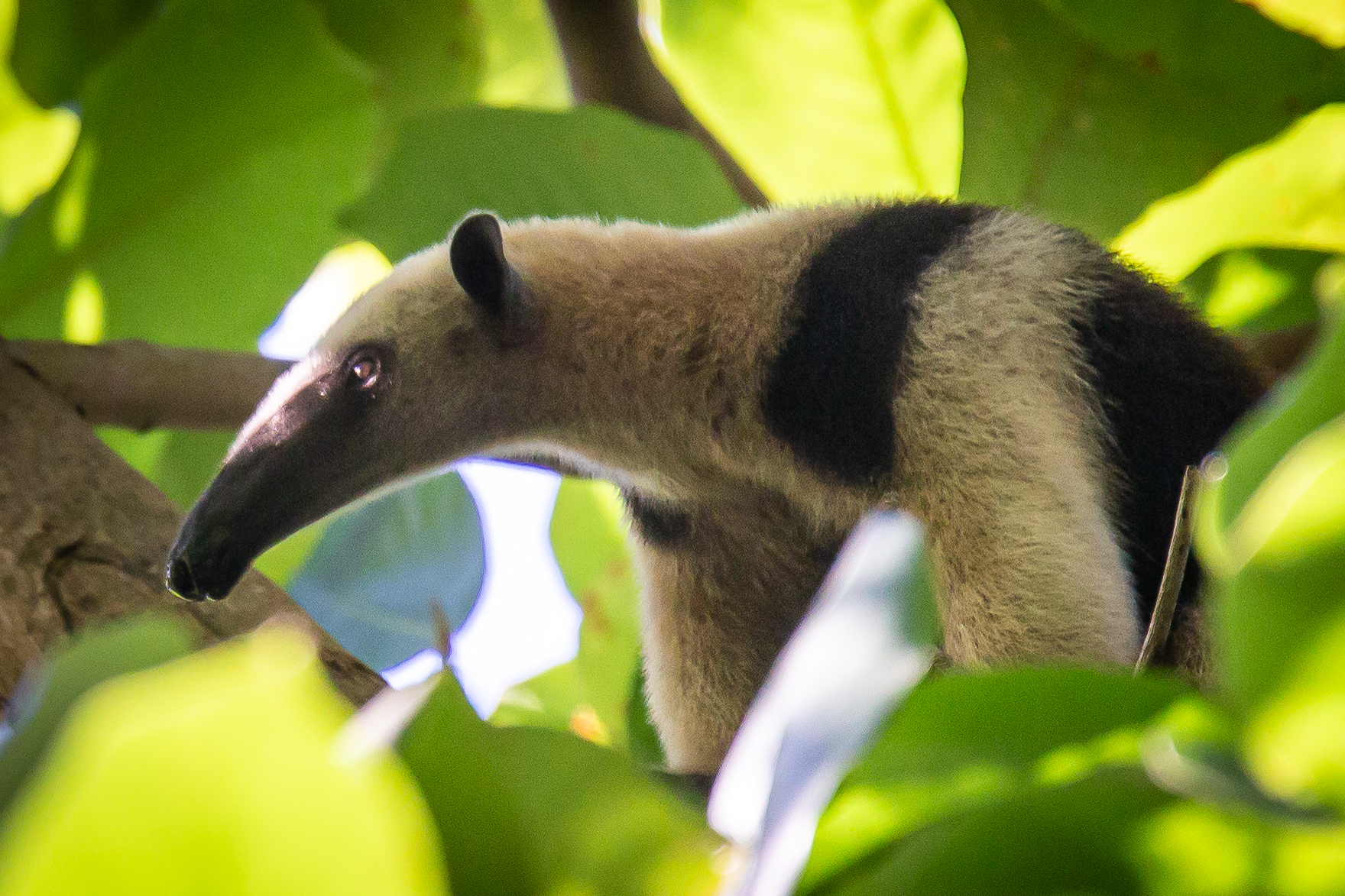The second tour we booked while at Luna Lodge was a walking tour of one of the top-rated national parks of the world, Corcovado National Park. Again the day started early. Getting a jump on the day makes seeing wildlife more likely. Top on my list to see, but highly unlikely, was the Jaguar. It is a beautiful animal, but it is extremely shy and elusive. Even though this park is said to be one of the big cat’s strongholds, our guide for the day, a man named Eduardo, has never seen one.
We were told that we should be sure to bring plenty of water because it was a long walk and it would be hot. The path, though long at about nine miles in total, was fairly level. Some of the time we were walking on the hot black sand of the beach, some of the time we were walking through the jungle, and a few times we had to take our shoes off and cross rivers where they entered the ocean.
A certified guide is required within this park and we were happy to have a good one. Just about as soon as we walked through the park boundary, Eduardo asked excitedly, “do you smell that?” My wife and I both acknowledged that we did smell something a little different. A smell a bit like a skunk, but a little less unpleasant. Moments later, Eduardo located its source and I snapped a few photos, one of which you can see above. Eduardo called it a northern tamandua, one of the species of anteater found in this part of Costa Rica. It was the first time I had seen a live one in its natural habitat. (Unfortunately, I had seen more dead ones along the road than I had wanted to see. They have the habit of stopping in the road when they are alarmed.) Shortly after we saw the the anteater, we saw another mammal I had never seen. A large, omnivores, weasel called a Tayra. It was on a mission to find food and it was climbing banana plants looking for large fruits, which Eduardo called square bananas. The animal was a large male about the size of a medium sized dog with a long tail. He was hard to photograph, because he was always moving quickly along the ground between the many trees. Another mammal species we encountered was the black-handed spider monkey. They were resting high in the trees. It was one of four types of monkeys found within the park boundary and it is considered endangered. Before the day was over we saw three more mammal species; the tent-making bat, hanging in a palm tree (that Eduardo says is always there), the white-nosed coati, a relative of the raccoon, and the collared peccary, a type of wild pig. Eduardo also said he saw a whale spouting in the distance, but I never saw it. Check out our day in the park by clicking here, but you will find no jaguars or tapirs. Even with a good guide, it is tough to see it all. We finished the day exhausted, but thankful there was a pool and new friends back at the lodge.
On a side note, we did not see many frogs. Many tourists (including my wife) come at this time of the year because there is less rain and warm weather…not the right time for a frog lover like me. For many years, I kept exotic, captive-bred frogs as classroom pets. Eduardo looked hard and we found one species, a dart frog called Phyllobates vittatus, an animal endemic to Costa Rica. I think he was a little disappointed when I told him I kept them in my classroom for many years. To his knowledge, they had never been exported. You might have seen a photo in the group if you clicked above, but not a very good one. I did not want to chase the little guy out of his hiding hole.


